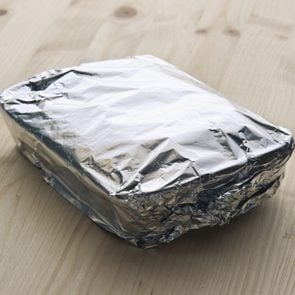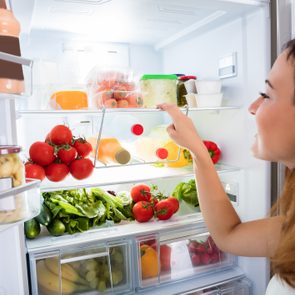These Are the Top 10 Most Wasted Foods
Updated: Sep. 20, 2023

You know avocados are on this list.
Food waste is a staggering problem in America. In 2010 alone, Americans wasted approximately 133 billion pounds of food, or 31% of the total supply, according to the U.S. Department of Agriculture (USDA). This food waste contributes to widespread issues of hunger and food scarcity and also consumes vast quantities of energy that impact our carbon emissions.
In an effort to better understand—and thus combat—American food waste, OnePoll and HelloFresh partnered to conduct a survey on food waste habits in American homes. This new research offers important insight into how Americans consume, store and waste their groceries, including why we don’t eat our leftovers and which foods are most likely to be wasted. This information can help Americans consume their food more intentionally and cut down on their individual waste.
Why HelloFresh conducted the survey on food waste
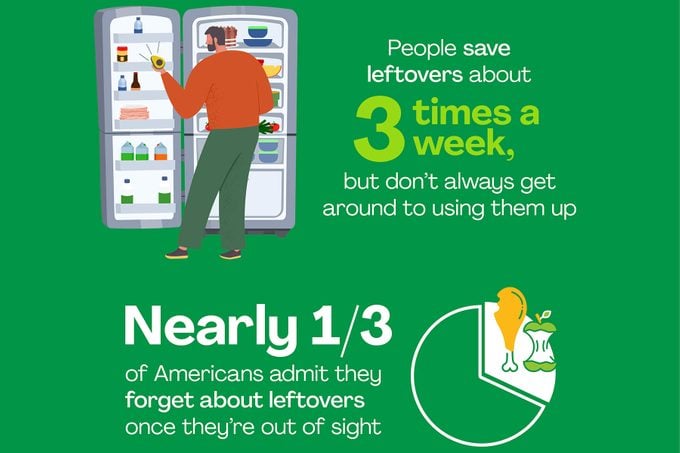
“With inflation contributing to record high food costs, wasting groceries each week hurts both the environment and consumers’ wallets,” said Jeffrey Yorzyk, senior director of sustainability at HelloFresh. Many consumers related to these concerns, with 60% saying they’d like to cut down on food waste to support their budget and 52% saying they’d like to be less wasteful for the environment.
The largest causes of food waste
According to the survey, there are a few main food waste culprits. One reason that food ends up in the trash is that buyers simply don’t feel like eating it. In the study, 38% reported throwing perfectly good food away for this reason. Additionally, 19% of respondents admitted that they overestimated the amount of food they needed while shopping.
Finally, about a quarter of respondents reported making more food than necessary when they cook and, of that quarter, 83% said this was in order to have leftovers. However, those leftovers often go uneaten, contributing to food waste at large.
How leftovers contribute to food waste
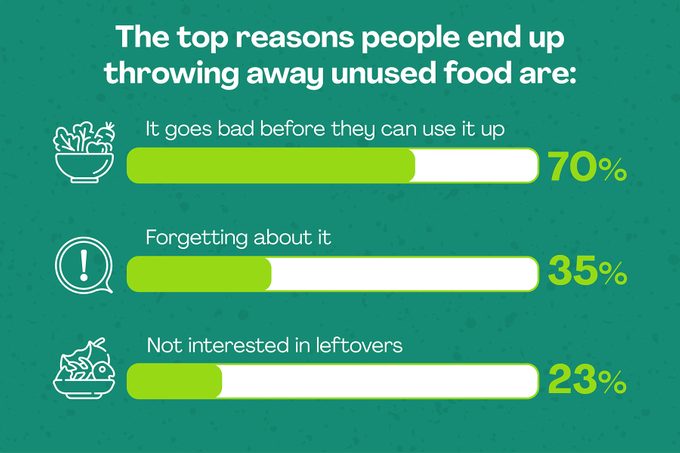
In the words of Yorzyk, “Families cook with the best intention of using their leftovers, but our research shows that they are generally not consuming all of those leftovers.” Here are the top three reasons why, according to respondents:
- Respondents forgot about leftovers as soon as they were out of sight (32%)
- Respondents got bored with eating the leftovers before finishing them (24%)
- Other household members did not want to eat the leftovers (23%)
Which foods are most likely to be wasted
Twenty-three percent of respondents also mentioned that ingredients come packaged in larger quantities than they can use before the food goes bad. Respondents identified ten foods they found most difficult to use up. Those ten foods—as well as the percentages of respondents who voted them most difficult—are:
- Lettuce (27%)
- Bananas (23%)
- Milk (21%)
- Apples (21%)
- Bread (21%)
- Avocado (17%)
- Deli items, such as meat, cheese, and prepared foods (16%)
- Eggs (16%)
- Meat (15%)
- Carrots (14%)
How you can reduce food waste
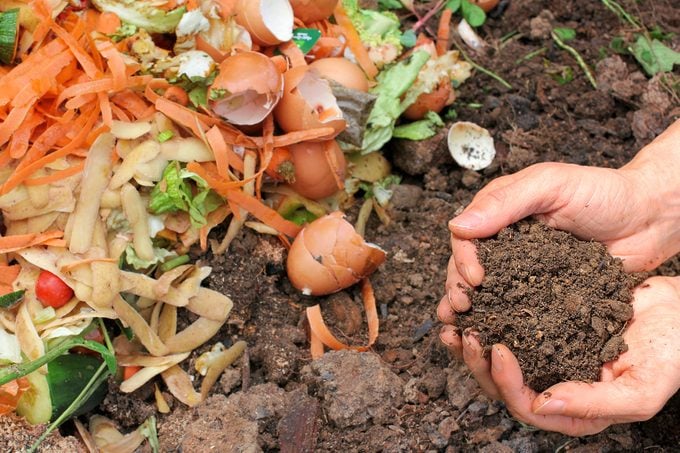
With all of this key data in mind, there are a number of ways you can actively work to reduce your food waste. To start, follow these tips:
Shop smart
Be as intentional as possible when you are grocery shopping. Buy smaller quantities and really evaluate whether or not you want to eat something before tossing it in your cart. To help prevent impulse purchases, make a meal plan before you shop.
Consider “ugly” produce
Many fruits and vegetables are wasted simply because they may have an extra bump or two. As long as the produce is unblemished and firm, such “ugly” produce items are perfectly fine to eat! Sometimes, they’re even discounted, too.
Store ingredients properly
Twenty-two percent of respondents admitted that they are not confident that they know how to properly store their ingredients to maximize freshness. Start by placing your ingredients in the right places—vegetables in the crisper drawer, butter in the butter dish, etc. Then, be sure all packages are fully sealed to ensure air can’t speed up the rotting process. To best accomplish this, be sure to purchase reliable containers, plastic wrap, etc. to keep your food in.
Divide and conquer
If you must buy a large quantity of an ingredient, divide that ingredient up to store it properly. For example, if you have a large loaf of bread and know you can only eat half of it in a week, store the other half in the freezer and thaw it only once you’ve finished the first half.
Keep your leftovers in sight
Store leftovers at the front of your fridge, so that they are the first things you see when you open the door. This visibility alone will help you finish them before cooking any more food.
Start a compost
Unfortunately, sometimes you will need to throw out food, such as a rotten strawberry or two in your basket, a moldy slice of bread, or just inedible eggshells. For those instances, use a compost bin. Instead of being wasted, those food scraps can turn into fertilizer to help grow the next generation of produce.
Sources:
- SWNS Digital: Nearly 1 in 3 forget about leftovers once they’re out of sight
- USDA: Food Waste FAQs















